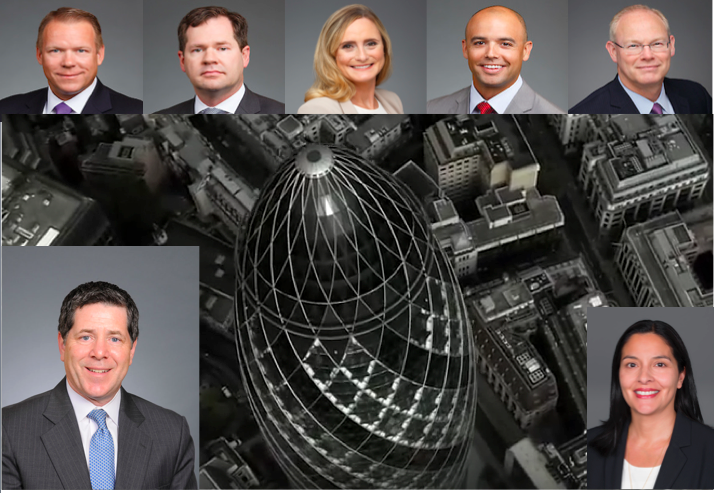2015, the Worst Year for Asset Managers Since 2008
| By Gabriela Huerta | 0 Comentarios
The global growth of asset management stalled as the industry in 2015 recorded its worst year since the 2008 financial crisis, according to a report by The Boston Consulting Group (BCG).
Growth in assets under management (AuM) stalled, and net new flows of assets, revenue growth, and revenue margins all dipped lower in 2015, according to Global Asset Management 2016: Doubling Down on Data. Asset managers’ future prosperity and competitive advantage will require them to shift from outdated product strategies and develop disruptive investment capabilities using leading-edge data and analytics, the report emphasizes.
BCG reports that the global value of AUM rose just 1% in 2015, to $71.4 trillion from $70.5 trillion in 2014, after growing 8% that year, and at an average annualized rate of 5% from 2008 through 2014.
BCG believes that the lack of overall growth was due largely to the generally negative and turbulent performance of global financial markets, which failed to buoy the value of invested assets as in prior years. Net new asset flows remained tepid. At the same time, the rising value of the US dollar reduced values of non-US assets in dollar terms.
Stuck in a Strategy of the Past
“Weak and turbulent global financial markets are today’s reality—one recent example being the market response to Britain’s ‘Brexit’ vote to leave the EU,” said Brent Beardsley, a BCG senior partner based in Chicago, the global leader of the firm’s wealth and asset management segment, and a coauthor of the report. “Asset managers that depend on financial-market performance to drive increases in asset values are stuck in a model from the past,” he said.
Overall profits remained relatively stable in 2015, but rose just 1% to reach $100 billion, the BCG report says. Profits as a percentage of revenues remained at a healthy 37% level, slightly below 2014, because of increased cost management by asset managers. Meanwhile, fee pressure on managers continued to rise.
The industry’s regional growth, as measured by AUM, reflected in large part the performance of capital markets by region in 2015. AUM decreased in North America and the Middle East but rose elsewhere. Growth was modest in Europe and strong in Latin America and Asia, excluding Japan and Australia. The 10% growth of AUM in Asia, excluding Japan and Australia, was relatively robust, but once again, it trailed the rapid expansion of the region’s private wealth.
Net new flows of assets—the lifeblood of the industry’s growth—also varied widely by region. Flows were tepid in the U.S. but more robust in much of Europe and Asia-Pacific, where they reached almost 2.5% and 3% of 2014 AUM, respectively. This performance marked a recovery of net flows in France, the Benelux countries, and Eastern Europe and continued positive momentum in Germany, Spain, and Italy. In Asia-Pacific, China and India were among the markets where net flows exceeded 10% of prior-year AUM.
While asset management continues to be highly profitable, the 2015 results underscore the continuing dependence of many managers on rising financial markets to boost asset values rather than on long-term competitive advantage to generate strong net new flows, the report says.
Advanced Data and Analytics “Will Define Competitive Advantage”
“The lack of market growth in 2015 reinforces the urgency faced by managers to pursue a step change in capabilities,” said Gary Shub, a Boston-based BCG partner, the global leader of the asset management topic, and lead author of the report. “Deep expertise, grounded in advanced data and analytics, will define competitive advantage and enable some managers to prevail,” he said.
Advanced and sometimes disruptive technologies—including machine learning, artificial intelligence, natural-language processing, and predictive reasoning—are on the verge of joining the mainstream asset managers, according to the report. Early-moving firms and financial-technology providers are beginning to model scenarios that push the boundaries of traditional analytics.
“As a result, today’s managers face a fundamental need to augment their investment processes by developing advanced capabilities in these digital technologies and practices,” said Hélène Donnadieu, a Paris-based BCG principal, the global manager of the firm’s asset and wealth management segment, and a report coauthor. “The alternative, for most firms, is to risk becoming irrelevant and trailing others in the ability to generate superior investment returns, or alpha,” she said.
Keeping up with the competition in that race to harness new technologies will require significant changes to almost all elements of a firm’s operating model, the report says. One example of these changes is how firms approach data, including its management, governance, and architecture. Crucial to that endeavor is the development of a target operating model, the blueprint of an asset manager’s ideal future state, to which the report devotes a full chapter.
The report also details the rising regulatory pressure on asset managers, noting that many players still need to develop a truly comprehensive risk management framework.
“Global regulators’ approaches to risk management in asset management are beginning to converge, giving firms a clearer view of appropriate risk investments,” said Zubin Mogul, a New York-based BCG partner and report coauthor.







